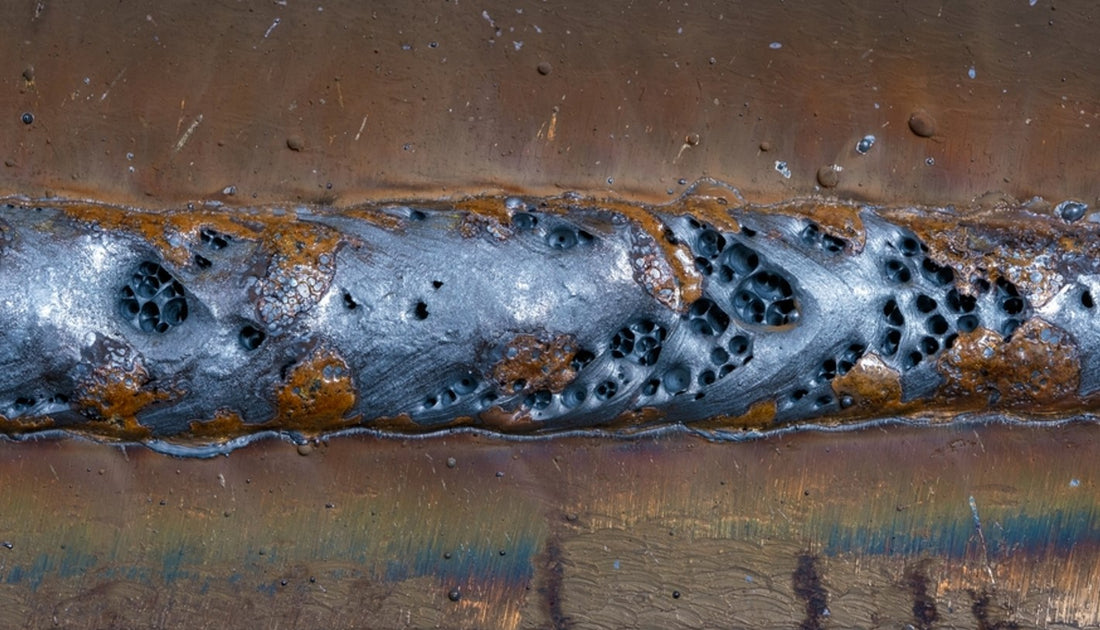What is Porosity in Welding: Secret Aspects and Their Influence On Weld Top Quality
What is Porosity in Welding: Secret Aspects and Their Influence On Weld Top Quality
Blog Article
Understanding Porosity in Welding: Exploring Reasons, Impacts, and Avoidance Strategies
As professionals in the welding market are well mindful, understanding the reasons, results, and avoidance strategies associated to porosity is critical for achieving durable and reliable welds. By diving right into the root causes of porosity, examining its harmful impacts on weld top quality, and exploring efficient prevention strategies, welders can improve their knowledge and skills to produce high-quality welds continually.
Typical Reasons For Porosity
Contamination, in the form of dirt, oil, or corrosion on the welding surface, creates gas pockets when heated, leading to porosity in the weld. Improper protecting takes place when the shielding gas, generally utilized in procedures like MIG and TIG welding, is incapable to fully shield the molten weld swimming pool from responding with the surrounding air, resulting in gas entrapment and subsequent porosity. In addition, inadequate gas protection, often due to wrong flow prices or nozzle positioning, can leave components of the weld unsafe, allowing porosity to create.
Effects on Weld High Quality
The visibility of porosity in a weld can considerably compromise the overall top quality and stability of the welded joint. Porosity within a weld develops voids or tooth cavities that compromise the structure, making it extra susceptible to splitting, corrosion, and mechanical failure.
In addition, porosity can prevent the efficiency of non-destructive testing (NDT) techniques, making it challenging to identify various other flaws or stoppages within the weld. This can bring about significant safety problems, especially in important applications where the structural stability of the welded elements is extremely important.

Prevention Techniques Introduction
Provided the damaging influence of porosity on weld high quality, effective avoidance techniques are vital to maintaining the structural integrity of bonded joints. Among the primary prevention methods is detailed cleansing of the base materials prior to welding. Contaminants such as oil, oil, corrosion, and wetness can contribute to porosity, so making sure a tidy work surface area is essential. Proper storage of welding consumables in completely dry conditions is also essential to avoid dampness absorption, which can bring about gas entrapment throughout welding. In addition, selecting the appropriate welding parameters, such as voltage, present, and travel speed, can assist minimize the danger of porosity formation. Guaranteeing sufficient shielding gas flow and coverage is one more crucial prevention technique, as not enough gas coverage can result in atmospheric contamination and porosity. Ultimately, appropriate welder training and certification are important for implementing preventative steps successfully and continually. By integrating these prevention strategies right into welding methods, the event of porosity can be dramatically lowered, resulting in stronger and a lot more trusted welded joints.
Relevance of Appropriate Protecting
Correct securing in welding plays a vital function in stopping atmospheric contamination and ensuring the integrity of bonded joints. Protecting gases, such as argon, helium, or a mix of both, are typically used to protect the weld swimming pool from reacting with aspects airborne like oxygen and nitrogen. When these reactive elements enter into contact with the hot weld pool, they can create porosity, causing weak welds with lowered i thought about this mechanical residential or commercial properties.

Poor protecting can cause various problems like porosity, spatter, and oxidation, jeopardizing the structural honesty of the welded joint. Sticking to proper protecting practices is crucial to produce top quality welds with minimal problems and make sure the longevity and reliability Read Full Report of the welded parts.
Monitoring and Control Techniques
Exactly how can welders successfully keep an eye on and control the welding process to ensure optimal results and stop flaws like porosity? By constantly checking these variables, welders can determine variances from the optimal conditions and make immediate adjustments to prevent porosity development.

In addition, carrying out proper training programs for welders is vital for keeping track of and regulating the welding process successfully. What is Porosity. Informing welders on the importance of maintaining regular criteria, such as proper gas shielding and take a trip speed, can aid protect against porosity problems. Regular analyses and accreditations can also make certain that welders are efficient in surveillance and controlling welding processes
Moreover, using automated welding systems can boost tracking and control capacities. These systems can exactly regulate welding specifications, lowering the possibility of human error and guaranteeing constant weld top quality. By incorporating sophisticated surveillance technologies, training programs, and automated systems, welders can successfully monitor and manage the welding process to decrease porosity issues and achieve top quality welds.
Conclusion

Report this page